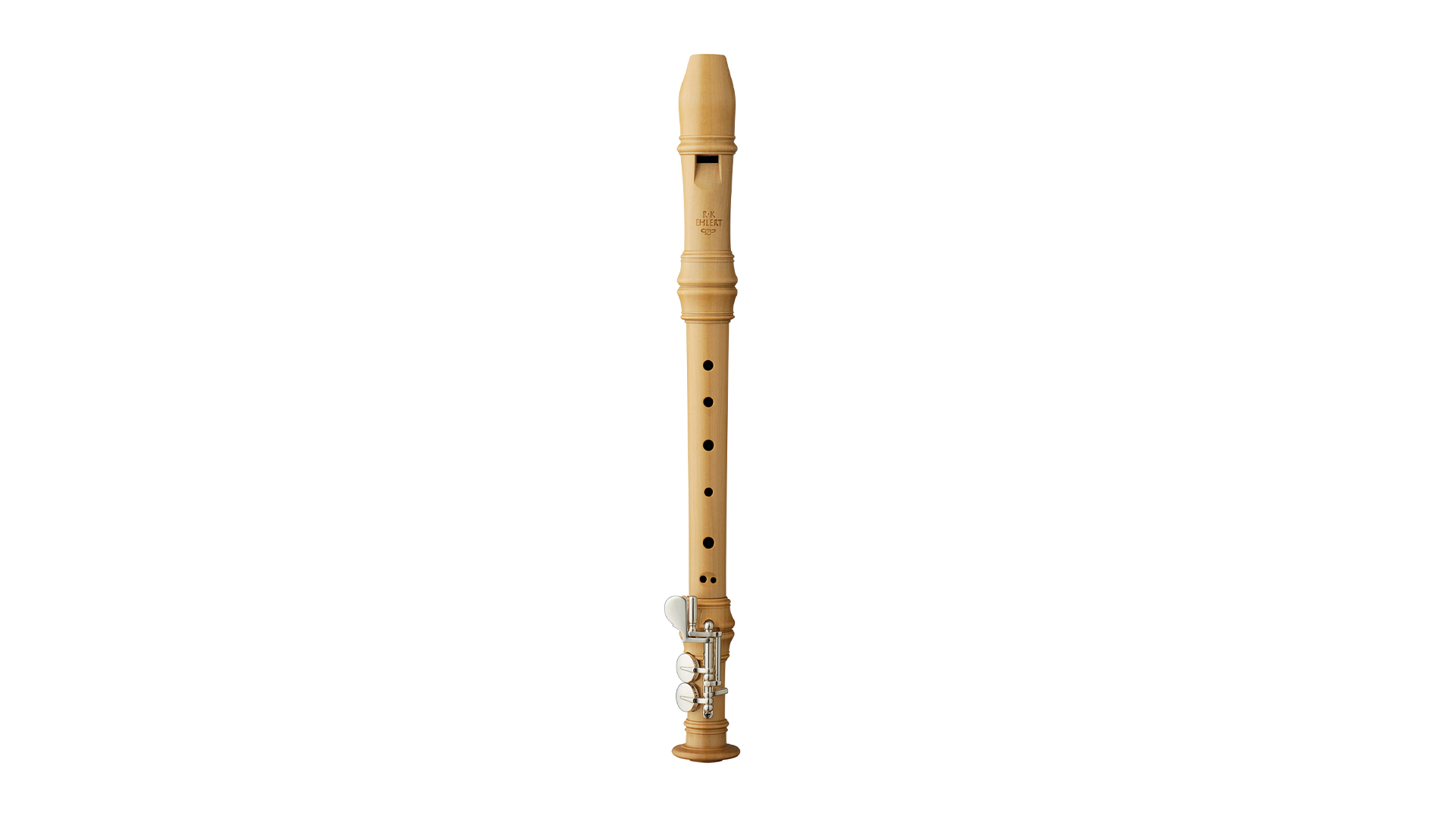Baroque Doublehole, Item: 5243-MOE Natural, 442 Hz
The Soprano instrument with the model number: 5243-MOE crafted by Moeck is an instrument, that in making music constantly can give fun.
This characteristic is based to a large part on the masterful marriage of the special instrument model in fine tuning with the advantages of the material Boxwood.
The bore
The course of the inner bore of the instrument is cylindroconical and very wide. This kind of bore shape grants this model its characteristic tone.In principle, models with wider bore sound warmer, fuller, more fundamental and thus more suitable for ensembles than recorders with narrower scale.
For which music can the recorder be used for?
Boxwood is wonderful for instruments used for: All styles.To whom is this instrument addressed?
For the above facts it follows that recorders made of Boxwood are especially for ambitious amateurs and advanced players recommendable. An additional rule is that a valuable instrument makes the learning naturally beautiful than a cheap low-cost bargain.The windway of a recorder
The windway is the area in the head of the recorder where the blowing air is formed into a thin sheet of air. This air leaf is of one of the most important elements of the sound of the recorder. At the labium, the air stream is very quickly alternately directed inwards and outwards. This swinging flow stimulates the air in the body of the instrument. And this is the origin of the recorder tone. This is the reason why the labium must not be damaged in any case. The same applies to the windway. Otherwise suffer the range of musical expressiveness of the recorder.
The windway of the recorder 5243-MOE of Moeck has this windway shape: Curved, conical.Conical shaped windways accelerate the air leaf more than cylindrical windways.
Never underestimate windway and labium! Their meaning for the sound is uncommon complex in their geometric shape. Even minor damages here often lead to a total loss!
Fingerings
The instrument Moeck 5243-MOE is manufactured in the following version: Baroque Doublehole .
Construction
The constructional design in terms of multipartness a recorder influences strongly the way it in daily use on the one hand is simple to handle in terms of easy gripping and on the other hand for the safe transport.
This is a point that should not be underestimated, especially when transporting larger (and sometimes multiple) instruments.
{Experienced ensemble players can tell you a thing or two about this. Or ask veteran ensemble leaders.
Leaders of recorder orchestras know how useful good and compact recorder cases are.
Packaging and accessories
The instrument is supplied as standard with: CaseThe useful accessories included: Wiper rod, drying cloth, pivot grease, care instructions, fingering chart
Recommendations for finding a new instrument
Ask acquaintances!The search for your recorder should in no case be influenced by opinions prevailing in your environment.
Get your own realizations after testing a recorder. Don't let "well-meaning" advice.
Do not let others stop you from testing a unkown brand.
Your taste is as unique as you are.
Therefore, only you can decide which construction will personally to "make music endlessly".
Our recommendation is therefore: Try new manufacturers!
After that you will be surprised and can make a safe decision.
Information about instruments with keys
Not always can tone holes be drilled in places in the body that are comfortable and easy to reach with the fingers. Especially with larger instruments sit for acoustic necessities tone holes ergonomically not to reach. On such instruments, keys are added, which make gripping easier, or possible in the first place.This allows it to be {pleasant|light|ergonomic|conspicuous|above average| good grip even by players with smaller hands.
The instrument 5243-MOE has the following flaps: Foot flap 2-fold
| Accessories: | Wiper rod, drying cloth, pivot grease, care instructions, fingering chart |
|---|---|
| Bore shape: | cylindroconical and very wide |
| Construction: | 3-part (head, middle, foot) |
| Fingering: | Baroque Doublehole |
| Keys: | Foot flap 2-fold |
| Material: | Boxwood |
| Material: Botanical name: | Calycophyllum multiflorum |
| Material: Country of origin: | Argentina, Brazil |
| Packing: | Case |
| Surface treatment: | Natural |
| Target group: | Ambitious amateurs and advanced players |
| Windway: | Curved, conical |
| Size: | Soprano |
| Tuning pitch: | 442 Hz |
| Group: | Recorder |
| Material structure: | Boxwood: Partly porous structure |
| Musical use: | All styles |
| Sound characteristics: | Boxwood: Powerful sound, carrying in the treble. |
Login



